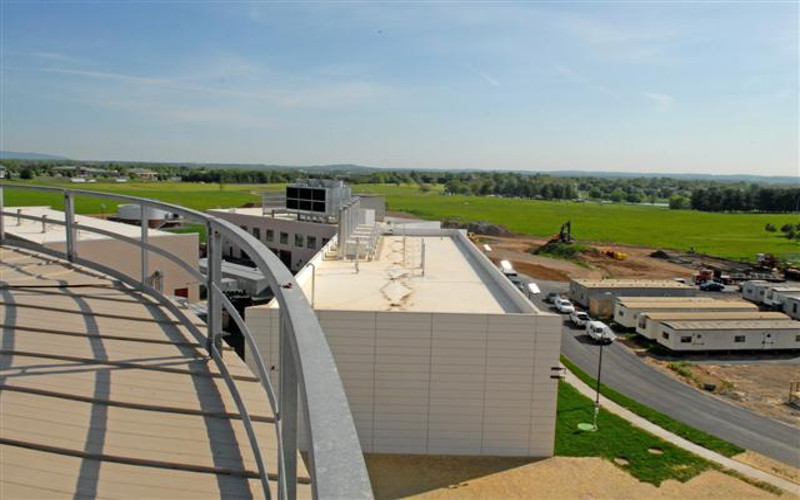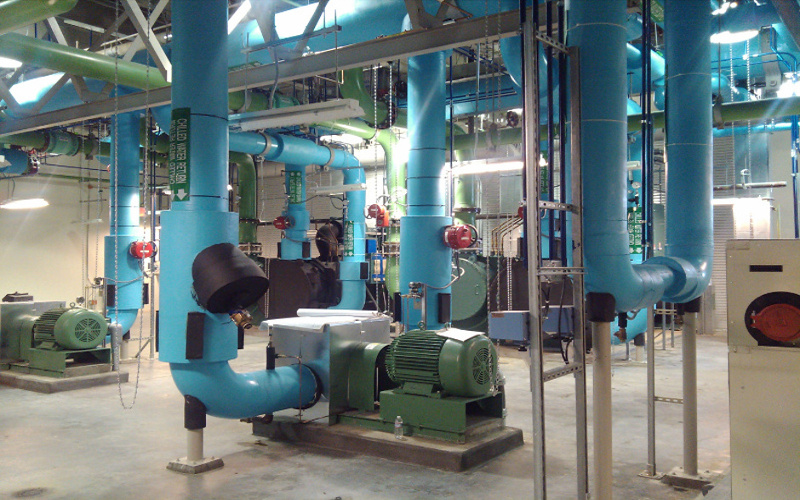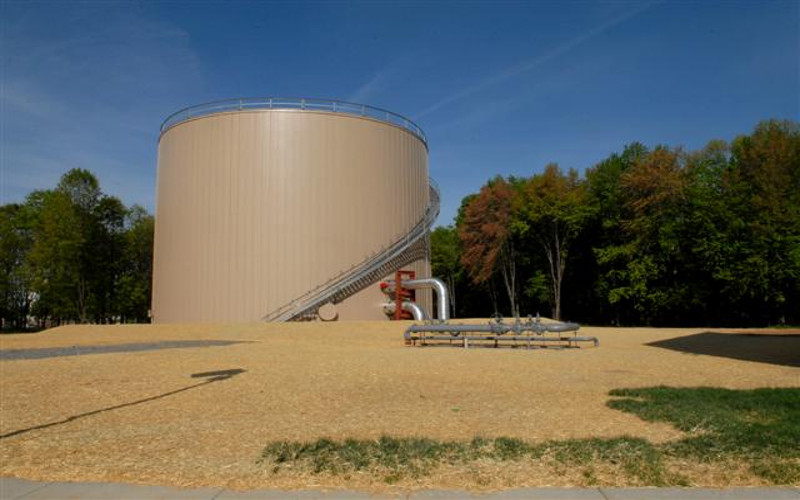Project Description
Project Name
34 MWh Utility-Scale Energy Storage
Location
National Interagency Biodefense Campus, (NIBC) Fort Detrick
Challenge
High Availability (99.99%) Thermal Energy
Description:
The NIBC Microgrid provides thermal and electrical energy to the National Interagency Biodefense Campus (NIBC) located on the U.S. Army’s Fort Detrick, Maryland, military base. The microgrid generates and distributes conditioned electricity, chilled water, and steam to biosafety level 3 and 4 laboratories on the campus through secure subsurface distribution systems. The commercial structure of the facility is, Microgrid as a Service, (MaaS) backed by service level agreements (SLAs) that define key performance indicators (KPIs) such as system availability rates, efficiency factors, power quality attributes, etc. To provide comfort that performance obligations are met, the SLAs are backed by monetary penalties for underperformance. More information on commercial aspects of the NIBC Microgrid which uses utility-scale energy storage can be found here.
All four of PowerSurety’s principals were responsible for driving and managing the development and delivery of this first-of-its-kind NIBC Microgrid project while under the employ of Chevron USA Inc. Due to the size and complexity of the project, the principals actively guided the project team through the project’s complex planning, development, design, engineering, economic and cost/pricing analysis, structured financing, and contract negotiation/award processes.
Critical to the support of NIBC’s stringent energy quality and availability requirements is the use of utility-scale energy storage to supplement and/or support the flow of energy to mission critical labs in the event of upset conditions or grid outages.
Stored electrical energy is converted from kinetic energy that is stored in spinning induction couplings, commonly known as flywheels or rotary uninterruptible power supplies (UPS). Total energy stored in the flywheels is equivalent to 3.78 X 108 joules, which when converted entirely to electrical energy, equals 105 kWh. This stored electrical energy is used as a source of reactive power during normal operations to compensate for anomalies that may occur either on the load or utility side of the sub-transmission grid. In the event of a complete loss of utility power, this stored energy is released over a short period to allow for mechanical synchronization and startup of conventional standby generators.
The NIBC Microgrid also stores a significant quantity of thermal energy in a 2.5 million gallon stratified-water tank that holds 27,000 ton-hours of chilled water. This thermal storage system is capable of displacing approximately 16 MWh of equivalent electrical energy required to run chiller compressors and primary pumps. In effect, the storage system is a huge virtual battery that cost-effectively and efficiently accomplishes the following with little-to-no technology or operational risk:
• Utility-scale energy storage can reduce peak electrical demand of virtually the entire chilled water plant
• Serves as a highly reliable source of back-up chilled water
• Extends islanding duration of electrical standby systems by shedding significant quantities of chilled water production load
This strategy of using stored thermal energy to displace electrical demand reduces operational risk to critical laboratory tenants during major grid outages. Since the NIBC Microgrid achieved commercial operation in April of 2008, there have been no microgrid-related outages or interruptions in service – even during system-wide grid outages following Hurricane Sandy and record-breaking snowfall events.
Utility-Scale Energy Storage Features
16 MWh Storage (Displacement)
27,000 Ton-Hours
Stratified Chilled Water
99.99% Availability
24 Hour Islanding Duration
2.5 Million Gallons




